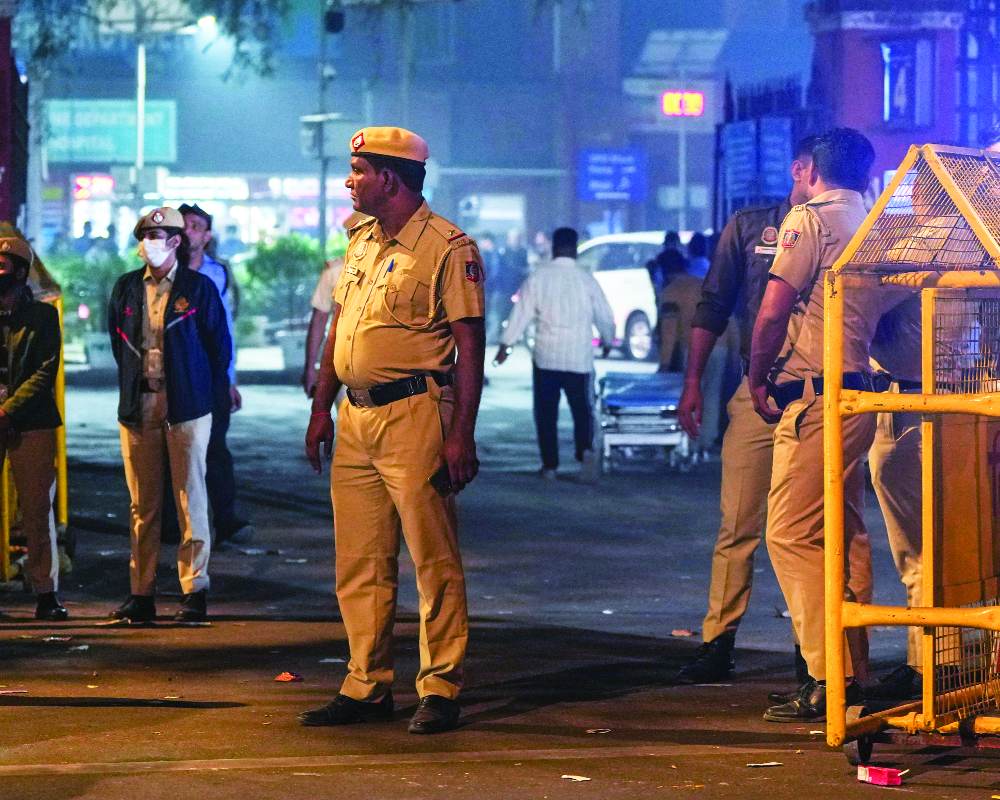Copyright dailypioneer

At Delhi’s Lok Nayak Jai Prakash (LNJP) Hospital, the air is heavy with fear, confusion, and the sharp smell of disinfectant. Two days after the Red Fort car explosion that killed 13 and injured several others, chaos still grips the hospital’s corridors. Only Gate No 2 is open for the public. All other entries remain sealed. Armed policemen stand at every gate. Inside, hospital guards check every visitor’s pass. A pink slip is now the key to enter any ward. Without it, no one moves. The emergency wing, where most blast victims are being treated, is under double security. Policemen and guards question even relatives before allowing them to step in. The corridor outside is crowded; some sit quietly on the floor, some argue with guards, and some simply stare at the ward doors, waiting for news. A senior hospital official confirmed that 27 people were injured in the blast. “Three are in the ICU. Two of them are critical. Three have left the hospital against medical advice,” he said. “All necessary facilities, including food and lodging, have been provided to families.” But on the ground, the scene near the emergency entrance is tense. Police ropes keep families away. Some plead for updates; others shout in frustration. A young man, who came in search of his missing brother, moved from counter to counter. “No one is telling me anything,” he said. At one point, he stopped near a group of doctors, telling them details about his brother. They sent him to a senior officer. After several questions, the officer told him to go to the mortuary. “Only one body is left from the blast victims,” the officer said. “You can check there.” At the mortuary, confusion deepened. One staffer said three bodies were still there. Another said only one. Finally, a senior doctor clarified, “Only one body remains, an elderly man, over fifty.” The boy stood silent for a few seconds and then walked away. He is denied a look at the deceased’s body. The police present at the hospital are tasked with two critical responsibilities: managing the crowd and assisting in the removal of body parts transported from the blast site. A senior constable, visibly distressed and rubbing his forehead, remarked, “People fail to recognise that we are also fatigued.” However, we must remain in this location. The environment within the ICU block presents a distinct quality; it is subdued yet laden with a palpable weight. Family members stand outside the transparent doors, observing the swift movements of the medical staff within. Nurses enter and exit, their expressions obscured by masks. With each opening of the door, there is a collective rise in anticipation. Most decrease once more without any indication. A woman sat alone in the courtyard near Gate No 2, her face concealed in her hands. Her brother sustained injuries in the incident. “Access to him is restricted,” she stated. “Our primary concern is to ascertain his current status.” As evening approached, the number of people outside the emergency building decreased, yet the atmosphere remained charged with tension. Police officers gathered in clusters, engaging in subdued conversation. An officer reviewed his phone, displaying a gesture of disapproval. Another approached the gate, directing a distressed family to the help desk for assistance. The area surrounding the Red Fort blast site, located merely a few kilometres away, has been secured and cordoned off. The NIA teams continue to gather evidence. At LNJP, the consequences of that explosion are evident in the weary eyes of families, the anxious movements of policemen, and the pink slips that flutter in fatigued hands. The duration of the blast in Delhi was merely a matter of seconds. However, within the hospital, the consequences appear to be interminable.



